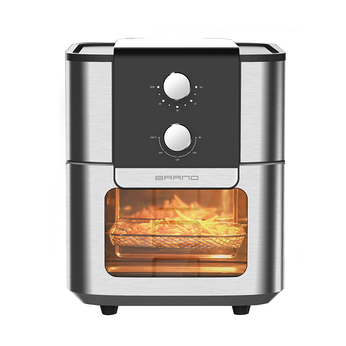The motor in a Wireless Egg Beater plays a crucial role in managing heat generation. Many modern wireless egg beaters are equipped with energy-efficient, brushless DC motors. Unlike traditional brushed motors, which generate more heat due to friction between the brushes and the motor’s commutator, brushless motors operate more smoothly with reduced internal resistance. This inherently results in less heat build-up. The use of brushless motors not only improves efficiency but also extends the device's longevity by reducing wear and tear, contributing to longer, uninterrupted use. These motors are often designed with cooling features such as high-quality bearings that reduce friction, further helping to keep the motor temperature within safe limits during prolonged operations.
Many Wireless Egg Beaters feature strategically placed ventilation holes or vents in their housing, often near the motor or other heat-sensitive components. These vents allow hot air to escape and fresh air to circulate around the motor, improving heat dissipation. By facilitating airflow through the device, these ventilation systems prevent the internal components from overheating, thus ensuring consistent performance over time. The exact placement of these vents is engineered to maximize airflow while maintaining the structural integrity of the unit, avoiding compromise to the device’s design and strength.
To protect against overheating, some advanced Wireless Egg Beaters include integrated thermal protection mechanisms. These systems consist of temperature sensors embedded within the motor or battery unit. These sensors actively monitor the internal temperature during use, and if it exceeds a pre-set threshold, the device will trigger an automatic safety response. This response may include shutting down the device temporarily or reducing the operating speed to allow the motor and battery to cool down. Thermal protection ensures that the internal components are not subjected to damage from excessive heat, which could otherwise lead to reduced performance, premature wear, or even total failure. This is especially beneficial for devices that are regularly used for extended periods or in environments with elevated temperatures.
The battery is another key component in the Wireless Egg Beater that requires careful temperature management. A sophisticated Battery Management System (BMS) is commonly incorporated into the design of these devices to prevent overheating and extend battery life. The BMS continuously monitors factors such as the battery’s internal temperature, charge level, and voltage. If the battery reaches an unsafe temperature due to overuse, the BMS may reduce power output or shut off the device to prevent heat damage. This system ensures that the battery operates within a safe temperature range, which is particularly important when the device is used for long durations. The BMS helps manage the charging cycle, preventing overcharging, which can also generate excessive heat and negatively impact battery health.
The materials selected for the construction of the Wireless Egg Beater play a significant role in heat dissipation. Manufacturers choose high-quality, heat-resistant materials for the housing and internal components of the device. For example, materials such as ABS plastic, polycarbonate, or aluminum are commonly used due to their excellent thermal conductivity properties. These materials help to efficiently transfer heat away from critical components like the motor and battery. The use of metals or heat-resistant plastics helps to prevent the housing from deforming or becoming brittle when exposed to high temperatures. The careful selection of materials ensures that the Wireless Egg Beater remains durable and functional even under demanding usage conditions, providing longevity to the device.


 English
English 中文简体
中文简体 English
English 中文简体
中文简体












